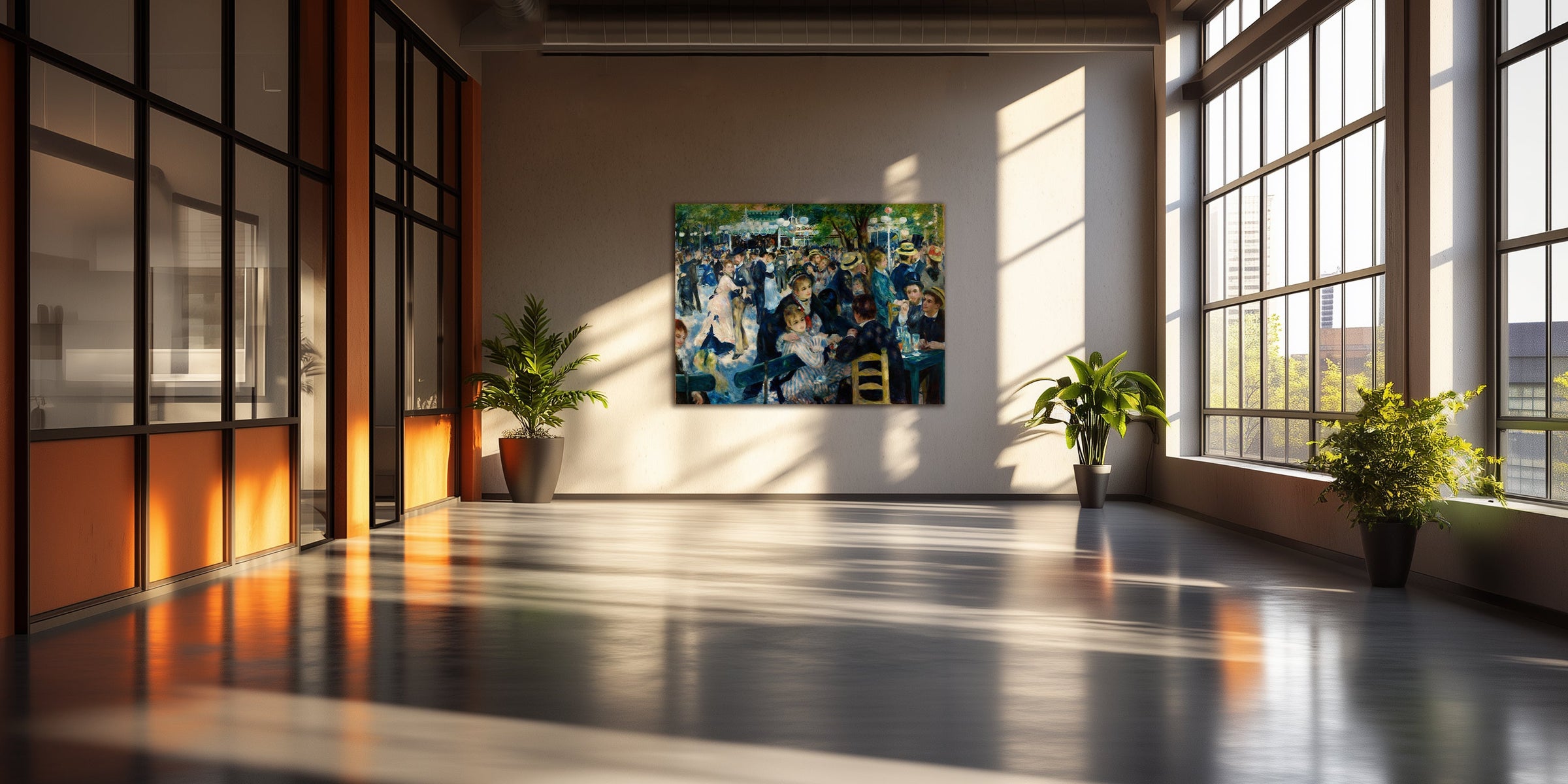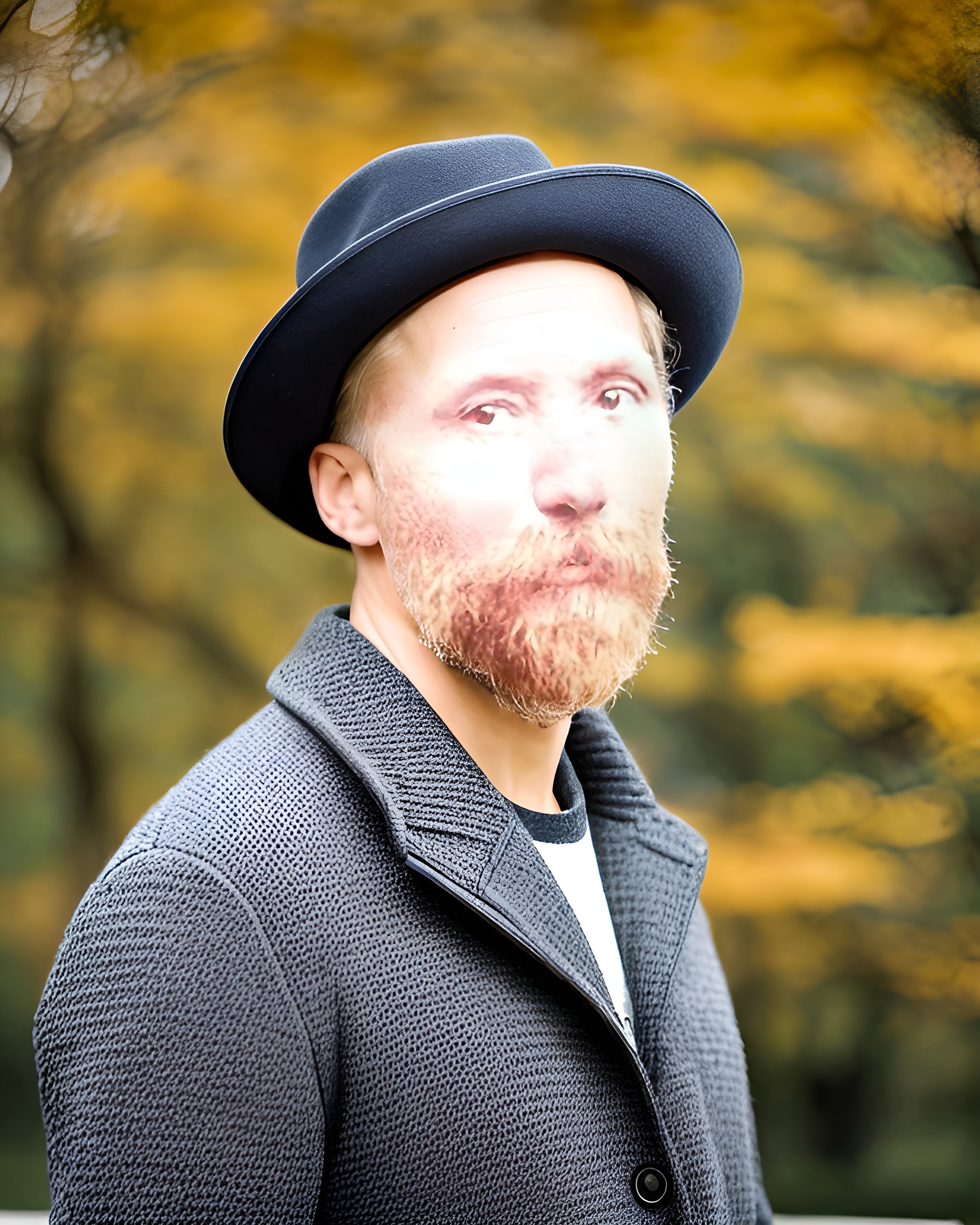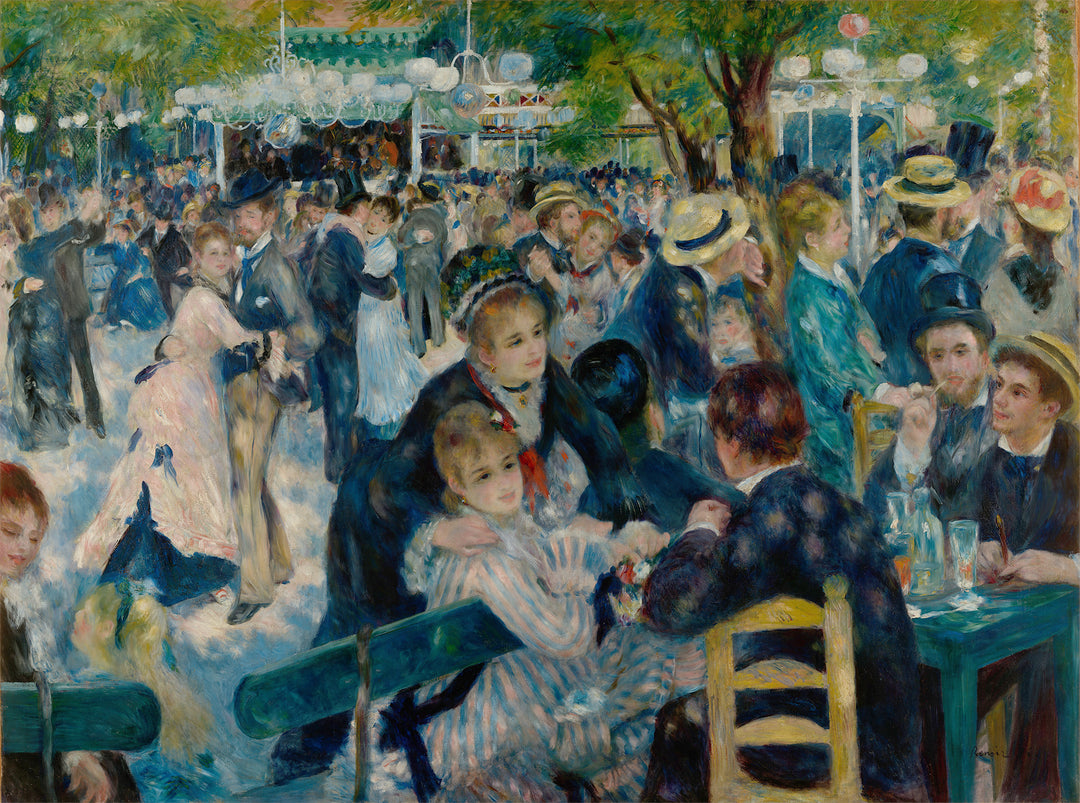
Renoir

Pierre-Auguste Renoir, born in 1841 in Limoges, France, was a central figure in the development of Impressionism, a movement that sought to capture light and color in everyday scenes. Renoir began his career as an apprentice in a porcelain factory, where he developed his painting skills before entering the "École des Beaux-Arts" in Paris. Influenced by the work of masters like Delacroix and the plein air painting technique of the Barbizon landscape painters, Renoir adopted and perfected the Impressionist style alongside contemporaries like Claude Monet and Alfred Sisley.
Throughout his career, Renoir experimented with various styles, including Impressionism and Classicism. His most famous works, such as "Le Moulin de la Galette" and "La Balançoire," demonstrate his ability to capture the life and atmosphere of the Parisian "Belle Époque" with a vibrant color palette and attention to detail in the depiction of light. In addition to his technical skill, Renoir had an optimistic view of life, which is reflected in his portraits and genre scenes full of joy and vitality.
Renoir also influenced later generations of artists. His focus on the beauty of the human body and his technique of loose brushstrokes inspired painters like Henri Matisse and Pablo Picasso, who admired his ability to combine color and form in an innovative way. Although he struggled with rheumatoid arthritis in his later years, Renoir continued painting until his death in 1919, adapting his technique to his physical limitations.
